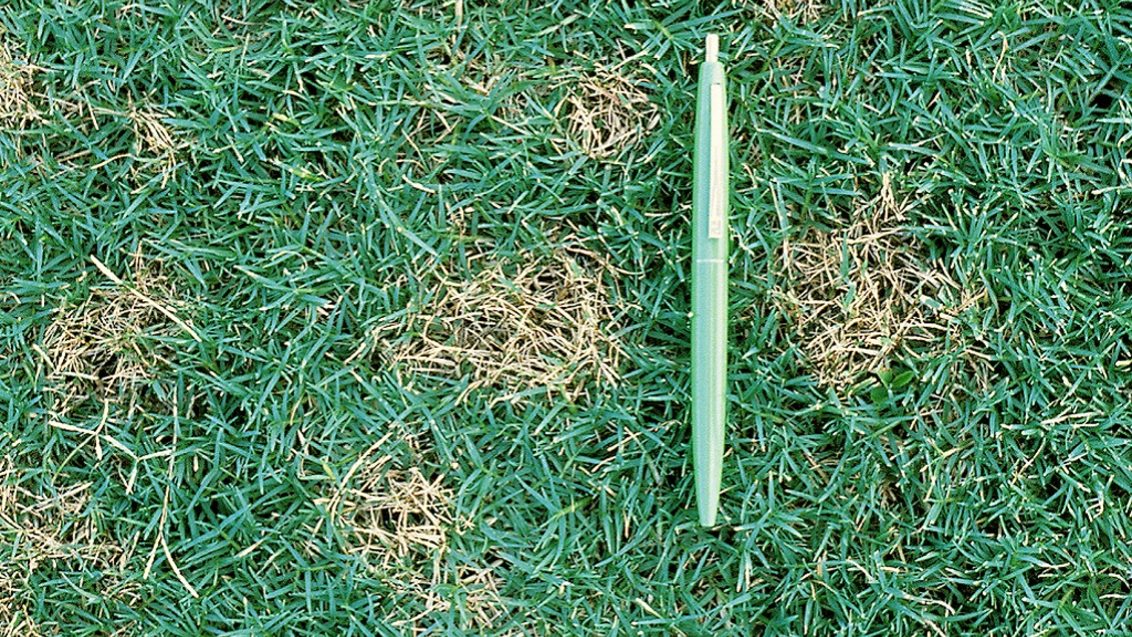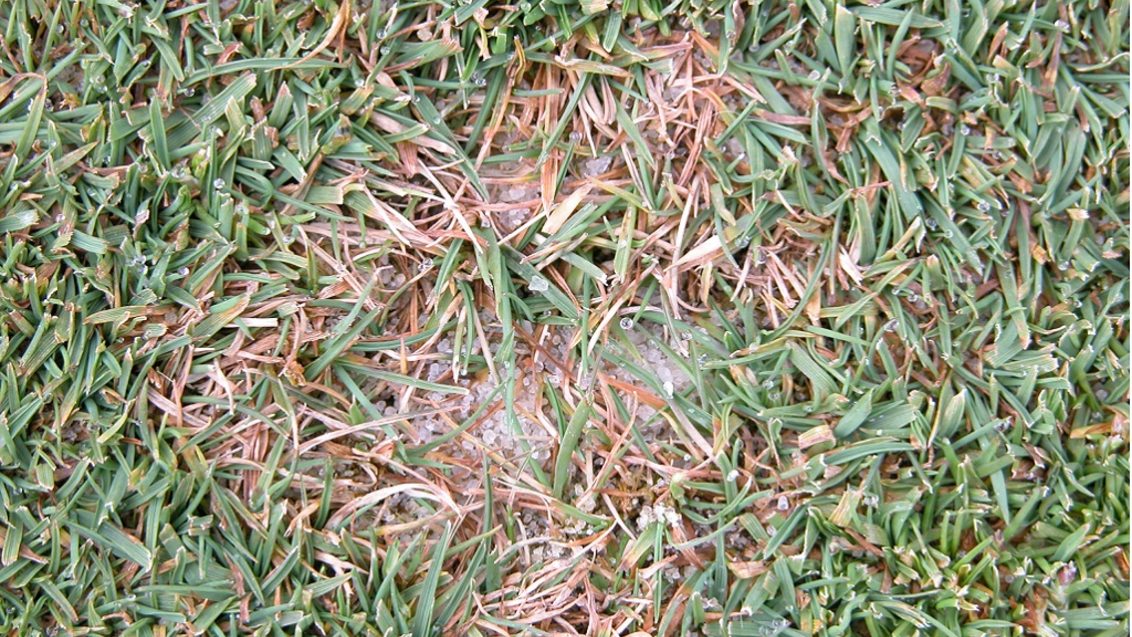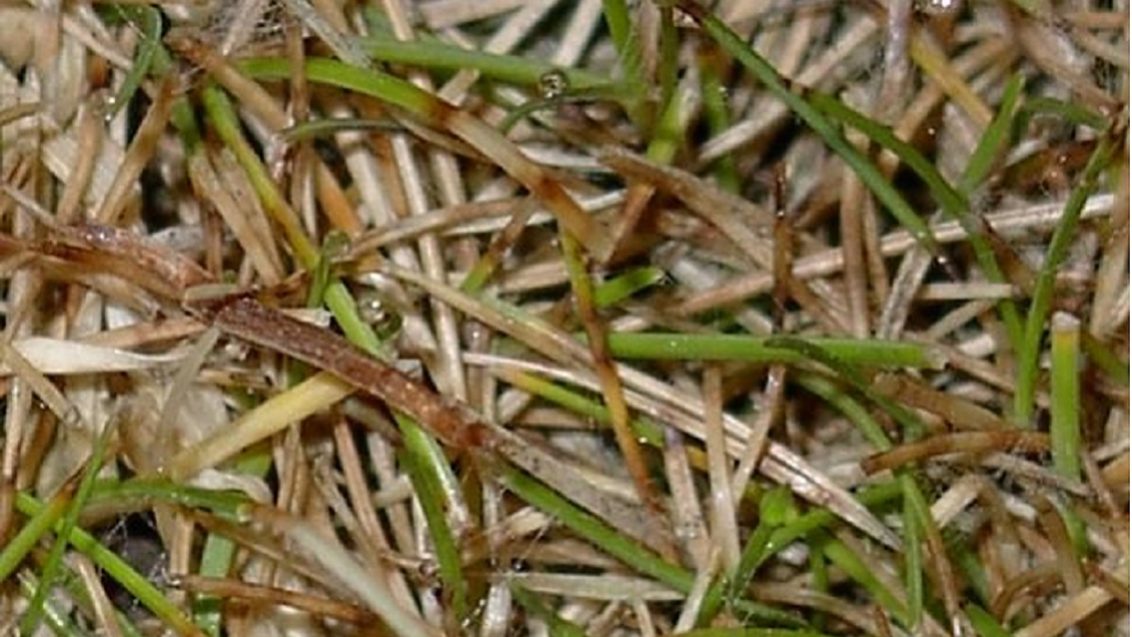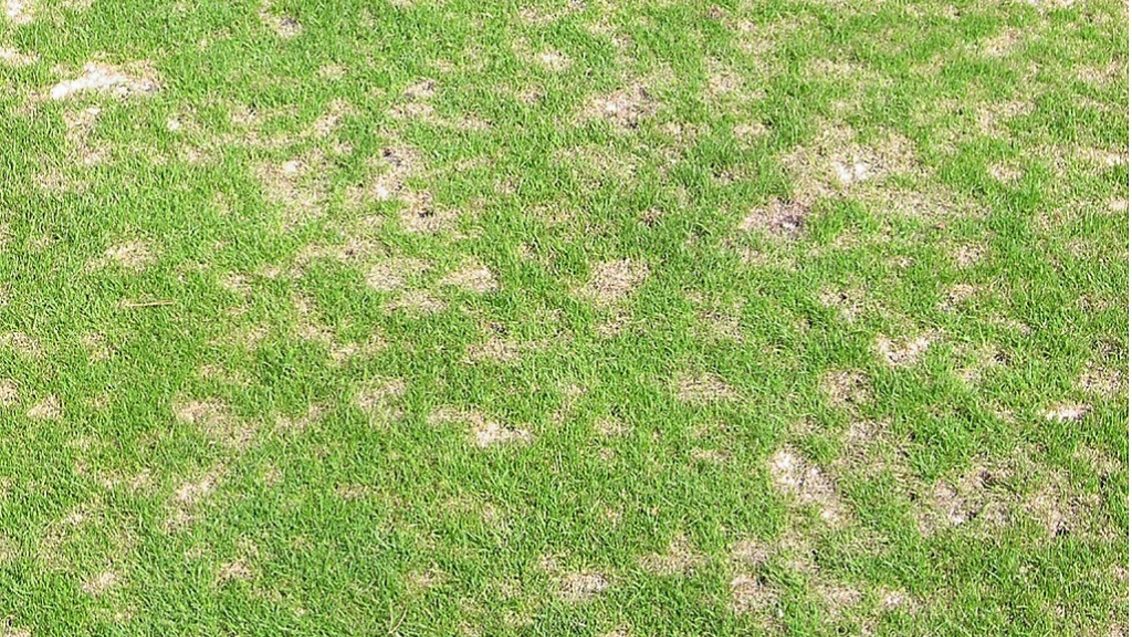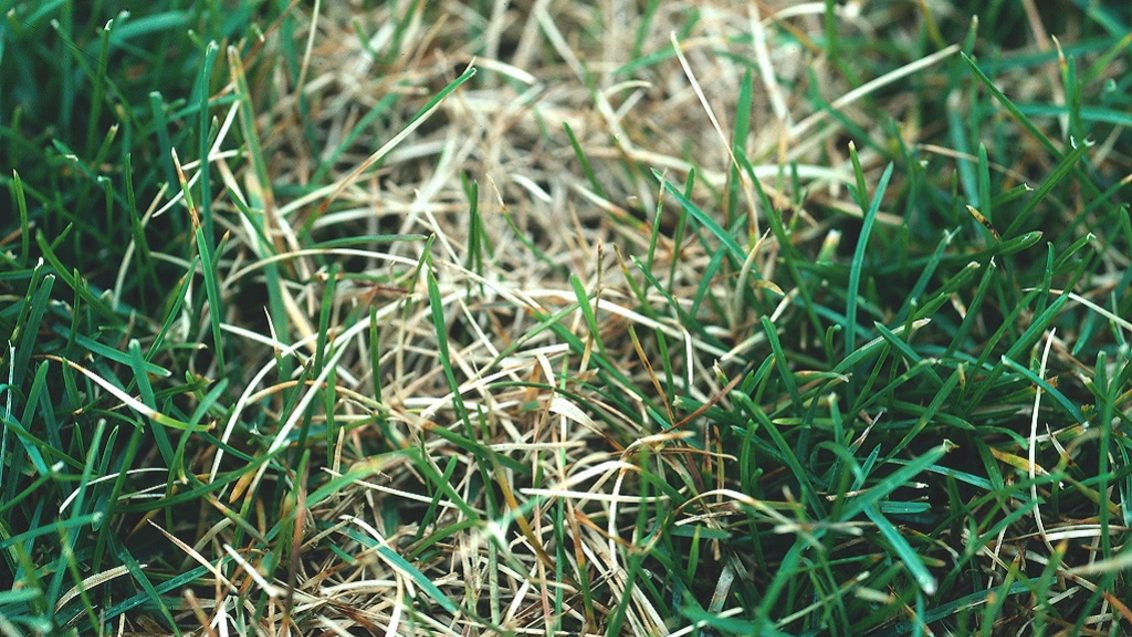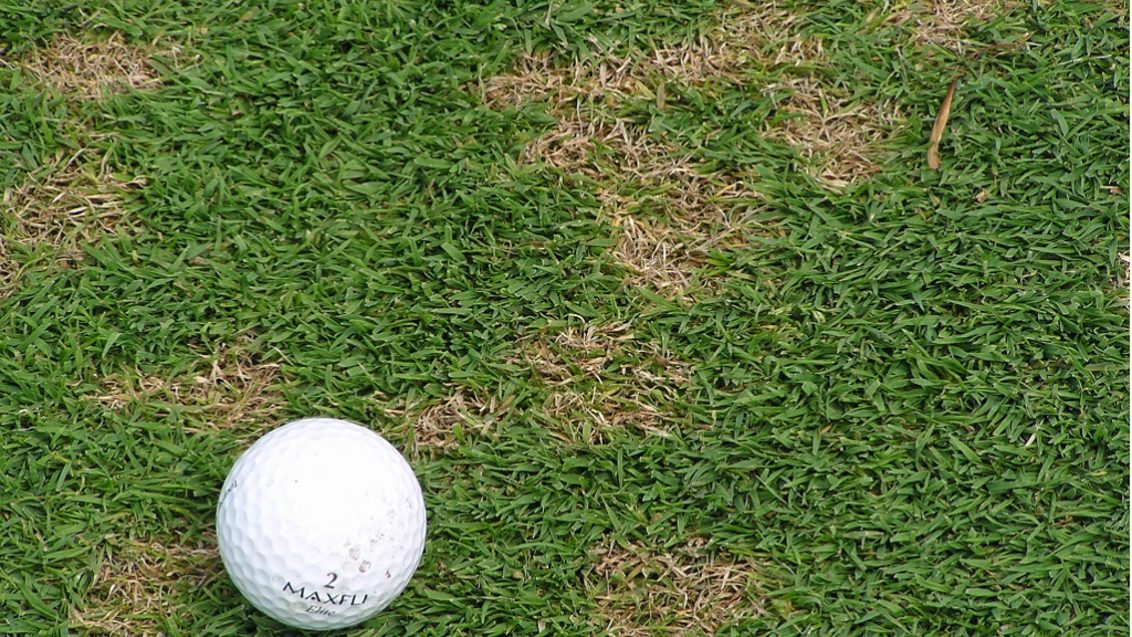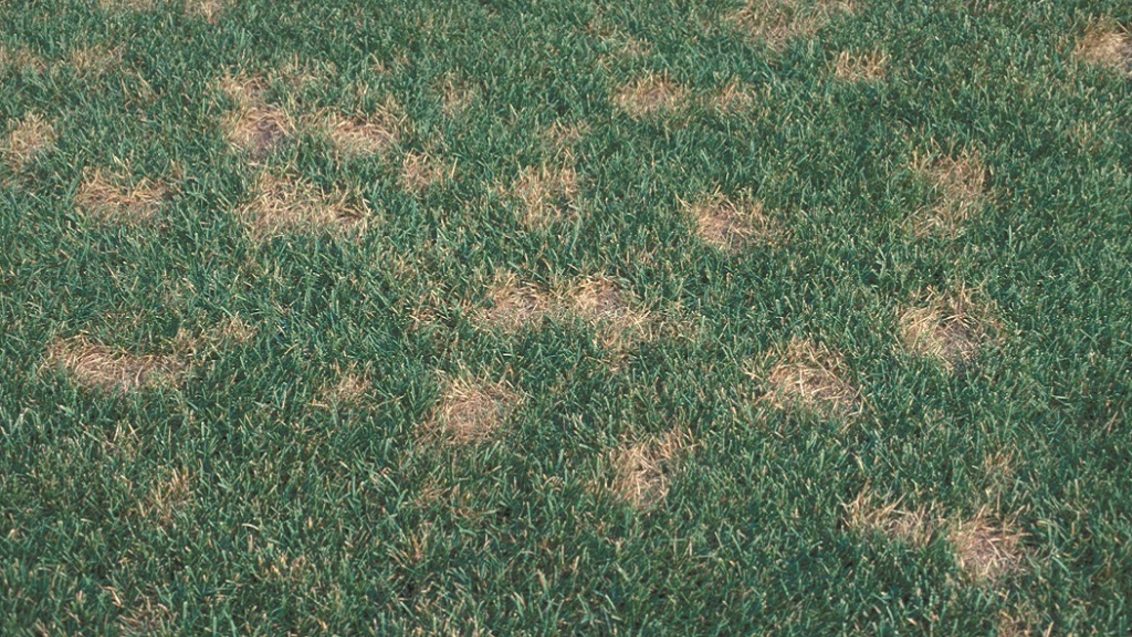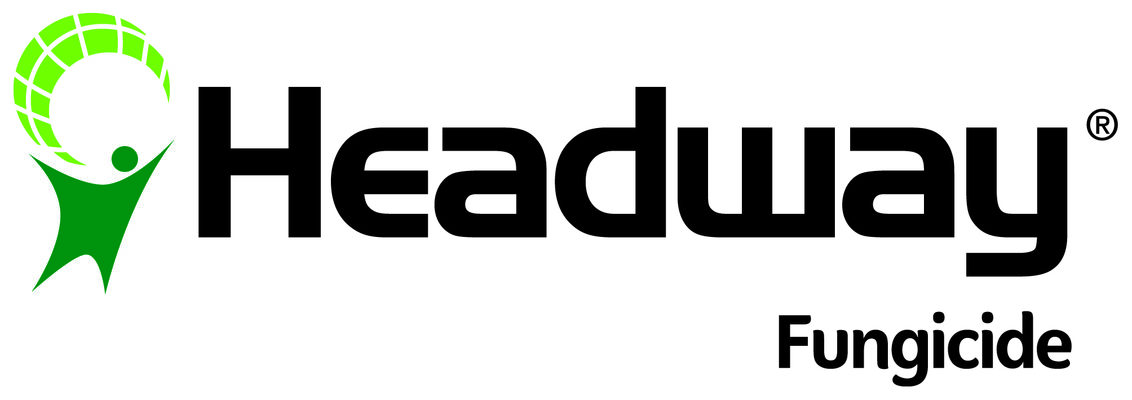Dollar Spot
Turf Disease
What is Dollar Spot?
Dollar spot lawn disease appears as silver dollar sized circles in the turf. Low nitrogen fertility increases dollar spot activity, as does low soil moisture. Dollar spot can be more serious than it may first appear because the lawn disease kills the entire grass plant, often requiring reseeding.
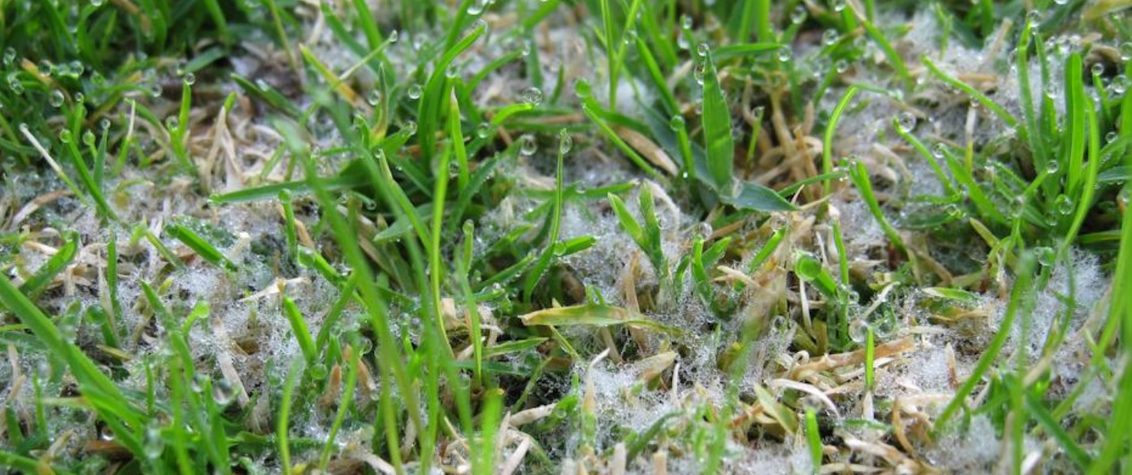
Causal Agent: Sclerotinia homoeocarpa
Susceptible Turfgrass: All species of warm- and cool-season turfgrass
Symptoms: Dollar Spot causes sunken, circular patches that measure up to 5 cm in diameter on golf greens and several inches on higher mown turf. The patches turn from brown to straw colour and may eventually coalesce, forming irregularly shaped areas. Infected leaves may display small lesions that turn from yellow-green to straw colour with a reddish-brown border. The lesions can extend the full width of the leaf. Multiple lesions may occur on a single leaf blade.
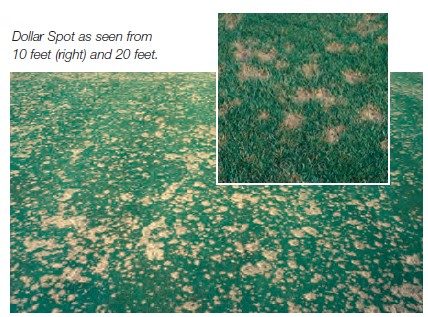
Description: Dollar Spot lesions on leaves are a pale, bleached colour. They are bound at either end by a darker reddish-brown band separating the affected tissue from the healthy green tissue. Small (dollar size) spots of bleached turf occur on close mown grass (Plate 1). The spots may coalesce to form large areas of affected turf (Plate 2). White mycelium may be present on affected areas on dewy mornings, which disappear as the leaves dry.
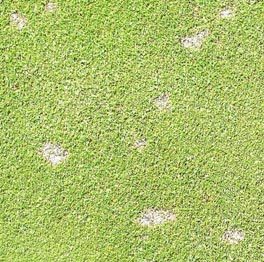
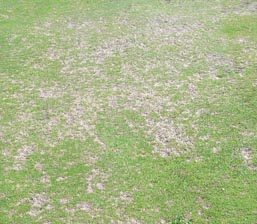
Dollar Spots coalescing
Conditions Favoring Disease:
Dollar spot is favored by temperatures between 15°F to 30°F and continuous high humidity. This disease is particularly favored by warm days, cool nights, and intense dews. It also infects areas with low levels of nitrogen and becomes more severe in dry soils.
Where is Dollar Spot found?
Any area of turf, especially golf greens, tees, fairways and bowling greens.
In the Arab Emirates, fescue dominant swards are at high risk of infection. Poa annua grass can also be severely affected.
When is Dollar Spot likely to attack turf?
During the summer months, when the daytime temperatures are above 20ºC. Humid or thundery conditions can encourage an outbreak, as can heavy dews.
Low fertility swards are at more risk from Dollar Spot.
Effects of Dollar Spot: The spots reduce the aesthetic appearance of fine turf, such as golf greens and create an uneven surface causing non-uniform ball roll.
On longer cut areas, such as tees, playability may not be affected (unless the outbreak is very severe) but the aesthetic appearance will be reduced.
High Risk Situations:
- Heavy morning dew.
- Daytime temperatures 20ºC and above.
- Low fertility situations.
- Excessively low cutting heights.
- Fescue dominant sward, although there is variation among subspecies and cultivars. Poa annua grass is also susceptible.
- Slowly growing turf.
- Moisture retentive turf surface.
Management Tips:
- Use an adequate level of nitrogen, particularly in the spring and early summer.
- Mow grass at regular intervals.
- Reduce thatch.
- Increase the air circulation.
- Irrigate turf deeply and as infrequently as possible to avoid drought stress.
- Remove dew from the turf early in the day.
- Convert to a turfgrass cultivar (especially for Bentgrass) that is more tolerant to dollar spot.
- Apply contact and/or systemic fungicides on a preventive basis.
Fungicidal Control: Preventative application provide optimal protection against Dollar Spot.
The below products have a label recommendation for Dollar Spot in UAE
|
Mode of action |
Systemic |
Systemic |
|
Dose rate |
3.2–6.4 l/ha OR 6.4–12.8 l/ha |
4.6–9.2 l/ha |
|
Water volume |
400 to 1000 l/ha |
Refer to Product Label |
Suggested Programme: Once conditions conducive to dollar spot occur, or Greencast indicates high risks of disease a preventative application of Banner Maxx should be applied.
Other Diseases in this category:

